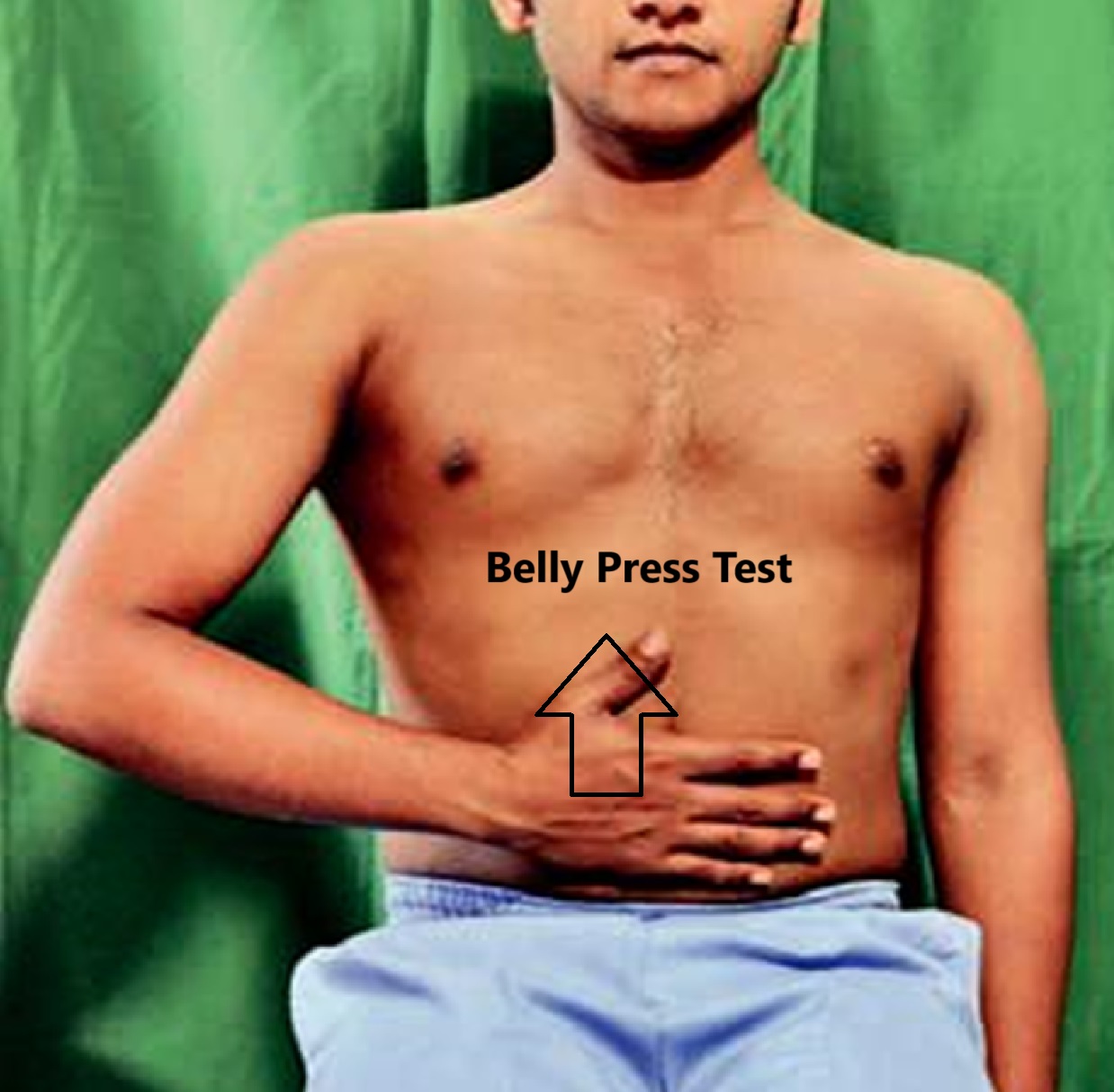Belly Press Test

Belly Press Test: A Clinical Tool for Subscapularis Muscle Assessment
Introduction
The Belly Press Test is a valuable clinical examination maneuver used to assess the integrity and function of the subscapularis muscle, a key component of the rotator cuff. This test helps diagnose subscapularis tendon tears or weakness, which are common in rotator cuff pathology, especially in patients with shoulder pain, instability, or post-surgical evaluation.
Anatomy and Function of the Subscapularis Muscle
The subscapularis muscle is the largest and most powerful of the four rotator cuff muscles. It originates from the subscapular fossa of the scapula and inserts into the lesser tubercle of the humerus. The primary function of the subscapularis includes:
- Internal rotation of the shoulder
- Stabilization of the humeral head in the glenoid cavity
- Dynamic support during overhead movements
A tear in the subscapularis tendon can lead to pain, weakness, and loss of internal rotation strength.
Indications for the Belly Press Test
The Belly Press Test is indicated in cases where a subscapularis tear or dysfunction is suspected. This includes:
- Acute or chronic shoulder pain
- Post-traumatic shoulder injuries
- Post-surgical evaluation (especially after rotator cuff repair or shoulder arthroplasty)
- Patients with difficulty in internal rotation (e.g., trouble tucking in a shirt or reaching behind the back)
How to Perform the Belly Press Test
- Patient Position: The patient is seated or standing.
- Hand Placement: The patient places the palm of the affected hand on their abdomen, just below the xiphoid process.
- Elbow Position: The patient is instructed to push their palm firmly into their belly while attempting to keep their elbow anterior to the body.
- Examiner’s Role: The examiner observes for compensatory movements and can apply gentle resistance to assess strength.
Positive Belly Press Test
The test is considered positive if:
- The elbow moves posteriorly, indicating weakness of the subscapularis (compensation by the pectoralis major).
- The patient cannot maintain pressure against the belly due to pain or weakness.
- The wrist flexes or the fingers extend to compensate for lost internal rotation.
A positive test suggests a partial or complete tear of the subscapularis tendon.
Belly Press Test vs. Lift-Off Test
Both the Belly Press Test and the Lift-Off Test (where the patient places their hand behind the back and lifts it away) evaluate the subscapularis. However, the Belly Press Test is preferred when:
- The patient has limited shoulder mobility and cannot place their hand behind their back.
- The patient has internal rotation contractures or post-surgical restrictions.
Clinical Relevance and Interpretation
A positive Belly Press Test often indicates subscapularis pathology, which may require further evaluation with:
- MRI or Ultrasound to confirm the extent of tendon injury.
- Physical therapy for mild cases or surgical repair for significant tears.
Early diagnosis through this test helps guide appropriate rehabilitation strategies and prevents further shoulder dysfunction.
Conclusion
The Belly Press Test is a simple yet effective tool in diagnosing subscapularis tendon tears. It is particularly useful when patients cannot perform the Lift-Off Test due to mobility limitations. A positive test should prompt further imaging and clinical assessment to ensure optimal management and shoulder function preservation.
Would you like to include specific references or case examples for clinical application?

